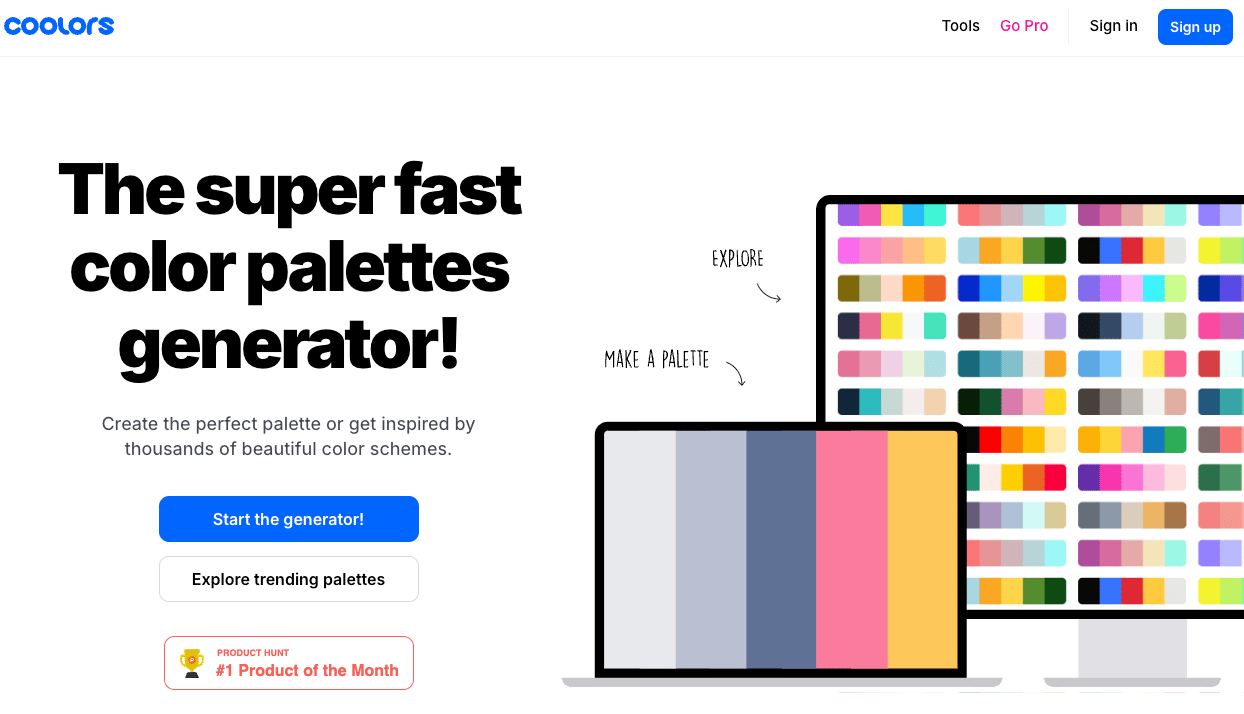✨ Clean living and avoiding toxic chemicals wherever one might find them has become hugely popular recently. Air purifiers, water filters, even non-toxic underwear are going viral all over the internet.
So why not build a platform that leverages this growing trend?
Featured Business - Coolors
The Idea
An online platform that consolidates data from multiple databases, certifications, and sources (e.g., GreenGuard, SPOT, Prop 65, Cradle to Cradle) into a comprehensive, searchable tool. It helps consumers, builders, and designers find healthy, sustainable, and chemical-free materials across various categories, including construction, furnishings, and home goods.

Ideal Customer
DIY Renovators: Homeowners seeking safe materials for renovations and improvements.
Builders and Contractors: Professionals looking for reliable sources of clean, eco-friendly materials for client projects.
Interior Designers: Designers balancing aesthetics with sustainability and health-conscious choices.
Property Managers: Those responsible for schools, hospitals, and offices, ensuring safer environments.
Eco-Conscious Consumers: Individuals committed to reducing their exposure to harmful chemicals.

Why It Will Succeed
Data Consolidation: By aggregating data from multiple trusted sources (GreenGuard, EPA, etc.), this platform eliminates the hassle of navigating disparate databases.
Customizability: Tailored filters for user-specific needs, such as budgets, certifications, or particular chemicals to avoid, make the platform versatile.
Actionable Insights: It doesn’t just list materials—it empowers users with the knowledge to make informed choices backed by trusted certifications.

Getting Started and Building an MVP
Core MVP Features:
A searchable database combining data from a few initial sources (e.g., SPOT and Prop 65).
Basic filtering options by product type (e.g., flooring, furniture), certification, and health criteria.
Detailed product pages with ratings and certification breakdowns.
Tools to Build:
APIs: Pull data from public environmental APIs and build connections with established databases like SPOT to automate updates and ensure data accuracy. See a detailed list of APIs and databases below:
EPA Envirofacts API: Provides data on environmental pollutants, emissions, and chemicals, including materials with EPA Safer Choice certification.
California Prop 65 Data: Information on substances listed under California’s Proposition 65 as harmful to health, useful for identifying flagged chemicals in materials.
SPOT (UL Sustainable Product Database): A database of sustainable and certified products, including GreenGuard materials. May require licensing or partnership.
Cradle to Cradle Certified API: Access to products and materials certified for meeting Cradle to Cradle sustainability standards.
OpenAQ API: Offers open-source air quality data, including pollutants, which can inform material-related health impacts.
LEED Building Data API: Provides data about LEED-certified materials and projects, aiding in identifying materials that contribute to LEED credits.
Green Button API: Delivers energy usage and efficiency data, relevant for suggesting energy-efficient building materials.
HBN (Healthy Building Network) Data: Resources and data for safer materials in construction, with a focus on reducing harmful chemical exposure.
Note that if you encounter technical challenges, consulting with generative AI models, like Claude, can significantly help in building a new website or app from scratch.
Detailed Actionable First Steps:
Research and Prioritize Categories: Begin with high-demand material categories, such as paints, flooring, and cabinetry, to attract an initial audience.
Establish Data Permissions: Contact database providers (e.g., UL SPOT) to secure permissions and ensure compliance with data usage guidelines. Alternatively, use open APIs where available.
Develop Prototype Database: Create a preliminary database with manually aggregated data for the selected categories to test functionality and user interaction.
Design User Interface: Build an intuitive and visually appealing search and filter interface that is mobile and desktop-friendly.
Conduct Testing: Engage target users (DIYers, contractors, designers) in beta testing to gather feedback on usability, search accuracy, and feature needs.
Refine Based on Feedback: Adjust filters, data presentation, and navigation to address beta tester concerns before full launch.

Monetization Strategies
Freemium Model with Usage Limits: Allow users to conduct a limited number of searches or view a restricted amount of data per month for free. For unlimited searches and full data access, offer subscription tiers tailored to casual users, professionals, and enterprises.
Subscription Plans: Offer premium features for professionals, including detailed reporting, project recommendations, and bulk download capabilities.
Affiliate Partnerships: Earn commissions by linking to certified brands and products.
Sponsored Listings: Allow manufacturers of healthy materials to sponsor listings, ensuring transparency.
Certification Revenue: Develop a custom certification for products meeting specific standards and charge for evaluations.
Data Licensing: Sell aggregated trends and insights to market researchers and government agencies.

Marketing Strategies
Content Marketing: Blogs, videos, and guides on topics like “Choosing VOC-Free Paint” or “Why PFAS-Free Matters.”
Social Media Campaigns: Highlight featured products, user success stories, and quick tips for clean material selection.
Partnerships: Collaborate with design schools, builder associations, and eco-certifiers for credibility and reach.
Targeted Ads: Use Google Ads and Facebook to target homeowners, builders, and designers interested in sustainable materials.
Community Engagement: Host webinars, forums, and interactive Q&A sessions to build trust and loyalty.

Expanding and Improving
Expand Database: Gradually incorporate more certifications and material categories like home goods, textiles, and appliances.
User-Generated Content: Allow users to rate and review products, enriching the database.
Integration with Tools: Partner with design software like AutoCAD or SketchUp for seamless integration.
Mobile App: Launch a mobile version for professionals on-site or consumers on-the-go.
Advanced Tools: Develop features like project-specific recommendations, cost comparisons, and lifecycle analysis tools.

Brainstormed Business Names
CleanBuild Compass
PureMaterial Finder
EcoCraft Database
GreenMaterial Guide
VitalMaterials Index
HealthyBuild Hub
SustainSafe Platform
ClearMaterial Ratings
The GreenLedger
PureConstruct Index

Thanks for checking out another edition of Easy Startup Ideas!
If you have any comments or suggestions on how to improve this newsletter, please let us know by commenting below.
As an Amazon Associate and affiliate of various partnership programs, the owner of this publication may receive commissions to linked products or services in this newsletter at no additional expense to the reader.
